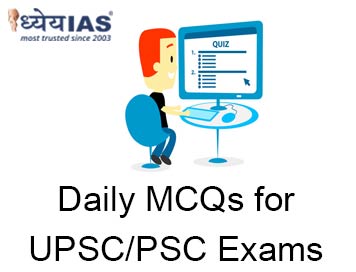Home > Daily-mcqs
Daily-mcqs 02 Jul 2025

Q1:
How many of the following statements are correct? 1. Dravidoseps gouensis is a new genus of amphibian. 2. Anguiculus dicaprioi is a new species of snake. 3. Five new species of amphibians were discovered in 2024.
A: Only 1
B: Only 2
C: All three
D: None
Answer: B
Explanation:
Statement 1 is incorrect because Dravidoseps gouensis is a new genus of reptile, not amphibian.
Statement 2 is correct—Anguiculus dicaprioi is a new species of snake.
Statement 3 is correct—five new species of amphibians were discovered.
So, two statements are correct.
Q2:
Which of the following best explains why vaccination is called a cost-effective public health measure?
A: It requires fewer health workers.
B: It prevents diseases before they occur, reducing treatment costs.
C: It reduces the need for antenatal care.
D: It eliminates all forms of child mortality.
Answer: B
Explanation:
Vaccination prevents life-threatening diseases early, avoiding expensive treatment and hospital care. This saves public health resources and protects vulnerable children affordably.
Q3:
Which of the following best describes Israel’s “periphery doctrine”?
A: Building alliances with Arab neighbors
B: Avoiding any foreign alliances
C: Partnering with non-Arab states to balance Arab power
D: Maintaining neutrality in regional conflicts
Answer: C
Explanation:
Israel’s periphery doctrine meant aligning with non-Arab countries like Iran and Turkey to counterbalance hostile Arab nations. This strategy was active before Iran’s 1979 revolution.
Q4:
Which of the following statements about cloud seeding is correct?
A: Cloud seeding is effective only in a dry environment and does not use silver iodide.
B: Cloud seeding is a scientific process that condenses water vapor in clouds to produce rain or snowfall.
C: Cloud seeding works only on warm clouds and does not involve the use of dry ice.
D: Cloud seeding results in a 50-60 percent increase in rainfall.
Answer: B
Explanation:
- Option A is incorrect because cloud seeding is not effective in a dry environment; it requires the presence of moist or supercooled clouds. Additionally, silver iodide is a key component used in the process.
- Option B is correct because cloud seeding is a scientific process that uses substances like silver iodide, salt, or dry ice to condense water vapor, leading to rain or snowfall.
- Option C is incorrect because cloud seeding works on both warm and cold clouds, and dry ice is used in cold cloud seeding.
- Option D is incorrect because, according to the content, cloud seeding results in an average rainfall increase of 5-15 percent, not 50-60 percent.